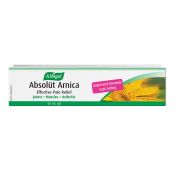The stock of Arnica has been drastically reduced over the years by excessive wild collection and as a result, the plant must be protected.
For A.Vogel, using Arnica as a raw material was acceptable only if cultivated sustainably and organically. Experts shook their heads in disbelief as the rare mountain plant, Arnica montana, had so far resisted all attempts at cultivation.
Could the experts be wrong?
Professor Bomme from the Bavarian Regional Institute of Agriculture (Germany) took up the challenge in 1983. “We had to start with nothing,” he recalls. “All previous attempts to cultivate the much sought after healing plant had failed miserably.” Fifteen years later, his work bore the most wonderful fruit. In 1998, for the first time it became possible to cultivate a large crop of mountain Arnica with a high content of active ingredients.
During these years, A.Vogel worked closely with an organic farmer who followed Professor Bomme’s direction. Through his enthusiasm and his own development work, the farmer succeeded in achieving the same quality in his cultivated crop for A.Vogel as could be found in wild Arnica. As a result, when the flowers are in full summer bloom, and the yellow Arnica fields sway in the wind, the golden blooms are picked and used to make A.Vogel Arnica products within 24 hours.
Arnica montana
The German scientist and writer, Goethe (1749-1832) claimed Arnica had saved his life. The history of this superb herb, Arnica montana, goes back centuries. Known also as Leopard’s Bane, it was discovered as a medicinal plant by Europeans in the 16th century.
Arnica is a perennial herb, which has a tall stem but very few leaves. The large flowers, most of which are bent back to some extent, bloom in the summer months of its second year. It is only the flower heads that are now used medicinally, and they are difficult to grow successfully, needing patient and careful cultivation in a specific type of soil.
Historically, Arnica was used both internally and externally. However, during the course of time, it has been used externally much more and today is only available internally as a homoeopathic remedy.
Applied externally, it is a very popular remedy for easing the pain and swelling of bruises as it is analgesic and has healing properties. But we now know that this amazing herb is beneficial for arthritic aches and pains and even for muscular aches and sprains. It has been clinically proven for its anti-inflammatory action on topical application.





